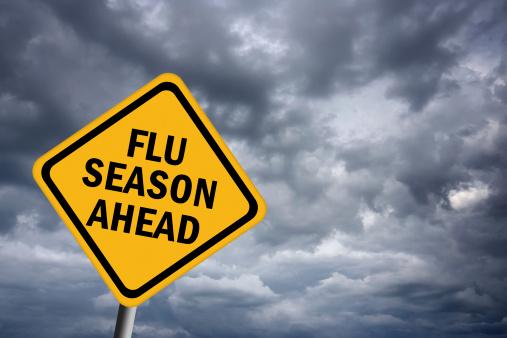US flu activity showed little sign of rise last week, though the percentage of clinic visits for flulike illness is growing in some southern states, the Centers for Disease Control and Prevention (CDC) said today.
The percentage of respiratory specimens that tested positive for flu rose from 5.4% to 7.0%, according to the CDC's latest update. However, the number is still below 10%, a level that typically signifies that the nation's flu season is under way.
The CDC said it expects more increases in flu activity in the coming weeks, and it urged people who have not been vaccinated to get immunized. The agency and its partners are gearing up for National Influenza Vaccination Week, scheduled for Dec 8 through Dec 14. The event is an annual push that highlights the importance of continuing flu vaccination through the holiday season and beyond.
Of the viruses that have been characterized so far, nearly 90% are influenza A, and of those that have been subtyped, most are the 2009 H1N1 virus, a contrast from the last year's flu season, which was dominated by H3N2 activity.
Other flu activity markers remained below baselines last week, including the percentage of deaths from pneumonia and flu. No pediatric flu deaths were reported.
Similar to last week's report, only one of the CDC's regions saw flu rise above its specific baseline—the one that includes south central states.
Looking at outpatient visits for flulike illness at the state level, the hot spots were also in the South, with Mississippi reporting high activity and Alabama and Texas reporting moderate activity. So far no states are reporting widespread flu, but four states—all in the South—are reporting regional geographic spread: Alabama, Florida, Kentucky, and Texas.
Season begins in Canada
In Canada, flu activity rose for the fourth week in a row last week, indicating that the country's flu season has started, the Public Health Agency of Canada (PHAC) said today in its latest update.
As in the United States, influenza A is most common, with the 2009 H1N1 virus as the most frequently detected subtype.
Only three regions are reporting localized activity, two in Ontario and one in Quebec. Thirteen of Canada's regions reported sporadic activity.
Activity low elsewhere
Flu activity in Europe remained low last week in all 28 reporting countries, the European Centre for Disease Prevention and Control (ECDC) said in an update today. So far in the this season there has been no evidence of sustained activity in Europe, the agency said.
The World Health Organization (WHO) said today that overall flu activity has crept up slightly in North America over the last 3 weeks but remains at low levels overall. It said that only a few countries in Europe have reported sporadic flu detections in respiratory sampling.
In Asia, flu activity picked up in northern China and Mongolia, but decreased in southern China, the agency said. Southeast Asia showed a mixed picture, with activity decreasing in Vietnam but increasing in Cambodia, Laos, and Thailand, where both influenza A strains, as well as influenza B, circulated.
The WHO said the Southern Hemisphere's flu season is mostly over. However, South Africa experienced a small second peak in September and early October, much of it from H3N2, although over the past 3 weeks influenza B has predominated.
See also:
Nov 22 CDC FluView report
Nov 22 PHAC FluWatch report
Nov 22 ECDC influenza update
Nov 22 WHO global flu epidemiologic update






















